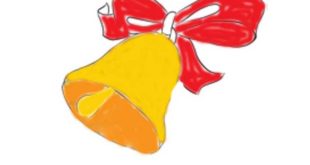When people draw, their artwork usually goes through a series of steps before it’s considered finished. Of course, not every picture goes through every step, as different artists have their own system. Generally speaking, there are five distinctive steps that go into making a quality image. Here is an overview of these steps and what you should consider when working on them. Simply click the name of a tool for more information on using it.
Layout
The first step is simply a very rough sketch or scribble of what the picture will look like. Everything is drawn quickly and lightly so that it’s easy to erase later on. Right now, the main focus is on depicting where various parts of the design go and how big they are. The details will come later on, so don’t worry about how it looks just yet.
If you’re working on a computer and the program you’re using supports it, use a separate layer for this stage and keep the layer at the bottom of the stack so you can draw over it as you continue.
Tip: to add some extra life to your work, try to depict a flow of movement when drawing the layout.
For best results, use utensils that are easily erased, such as a pencil. Other things, such as anything with color or ink, are best left for later.
Sketch
Now that you have the general idea of where everything will go, it’s time to set about adding the details. You still want to keep things fairly simple and easy to erase, so leave the fine details for the inking stage. When you’ve finished sketching, you should be able to see what the final drawing is going to look like. If something doesn’t look right, change it now before you continue.
Much like the previous step, if you’re using a computer and can use layers, do this on its own layer. With traditional media, you can sometimes duplicate this effect by placing a fresh sheet of paper over the page with the layout.
For best results, stick to your sharper pencils or even mechanical pencils while doing this, and avoid using anything that’s hard to erase like color or ink.
Inking
The next, and possibly trickiest, step is to ink the drawing. This involves using a strong black color to trace only the lines that are to stay in the finished image. Vector graphics software handles this the best, though raster editors can also do an excellent job. Inking by hand is becoming less common, and isn’t recommended if you can avoid it. Aside from being able to undo mistakes, computer programs used for inking also create crisper lines and make the next step even easier.
Be aware that this is going to be the absolute last chance to fix any mistakes you can see in the line work.
If you are inking by hand, calligraphy pens and fine-tip markers (also called felt tip pens) can do the job very well and are probably your best bet. The worst tools for this step are things that lack finesse or can’t make fine, bold lines.
Coloring
Once the line art is properly inked, you’re ready’ to add color. On computers, this is usually done using several layers placed underneath the line art made in the last step.
Coloring is frequently broken down to multiple smaller steps, starting with a solid base color. Shadows, highlights, midtones and other details get added next.
When coloring by hand, be picky about what you use for this. Some things, like ballpoint pens and mechanical pencils, can’t really produce uniform color. In their cases you should try using cross-hatching techniques instead.
Polishing
While most pictures are generally done once they’ve been colored, some artists like to add one last step to manipulate the picture as a whole in some fashion for that extra bit of polish. Some examples here include backgrounds, borders or removing all of the lines from an image. This step is optional and depends on what the artist wants.
Your imagination is the limit on what can be used for this. Software does a better job than anything, but don’t let that stop you.
 Drawn light
Drawn light



